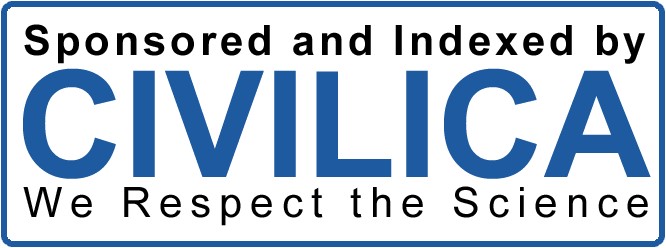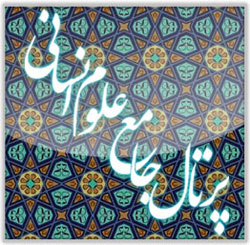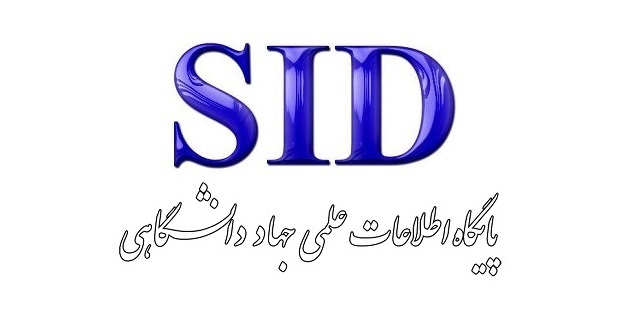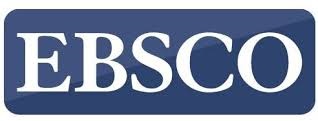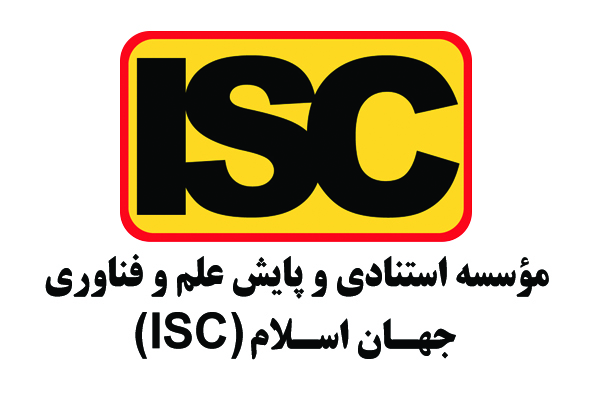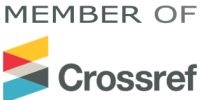تمهید ساختار سازمانی مطلوب به منظور استقرار صندوق شورای عالی علوم، تحقیقات و فناوری
کلمات کلیدی:
ساختار سازمانی, صندوق شورای عالی علوم, تحقیقات و فناوری, تحقیق و توسعه , تخصیص منابع مالی, سیاستهای علم و فناوری, تأمین مالی متمرکز پژوهشچکیده
این مطالعه با هدف طراحی ساختار سازمانی بهینه برای استقرار صندوق شورای عالی علوم، تحقیقات و فناوری در ایران انجام شده است. تحقیق و توسعه (R&D) نقش کلیدی در افزایش ظرفیتهای ملی و تقویت تابآوری اقتصادی ایفا میکند. در ایران، با وجود منابع مالی مختلف، تخصیص پراکنده اعتبارات پژوهشی به چالشی اساسی تبدیل شده است. تأسیس یک صندوق تخصصی با هدف تجمیع حمایتهای مالی از پژوهش و نوآوری و هماهنگی با سیاستهای ملی علم و فناوری، پیشنهاد شده است. صندوق شورای عالی علوم، تحقیقات و فناوری برای رفع ناکارآمدیهای سیستم تأمین مالی پژوهشی غیرمتمرکز ایران ایجاد شده است. هدف اصلی این صندوق، متمرکز کردن منابع پراکنده در دستگاههای دولتی مختلف و هدایت آنها به سمت اولویتهای ملی در حوزههای علم و فناوری است. برای موفقیت این صندوق، ساختار سازمانی جامع و کارآمد ضروری است. این مطالعه با بررسی چارچوبهای قانونی، ساختارهای بودجهای و صندوقهای موجود پژوهشی، مدلی را برای بهینهسازی تخصیص منابع و مدیریت آنها ارائه میدهد. این مقاله از طریق تحلیل دقیق، نمودار سازمانی جدید، سیاستهای حاکمیتی و دستورالعملهای اداری برای صندوق پیشنهاد میکند. هدف، ایجاد صندوقی است که بهطور کارآمد عمل کرده، سازگار با نیازهای ملی باشد و همکاری بین نهادهای دانشگاهی، صنایع و بخش دولتی را تشویق کند. این مطالعه نقشهای برای پیادهسازی راهبردی این صندوق ارائه میدهد که بر شفافیت، پاسخگویی و هماهنگی با اهداف بلندمدت توسعه علمی و فناوری ایران تأکید دارد.
دانلودها
مراجع
Abbasi, H., & Fattahian, N. (2018). The Impact of Strategic Learning on Organizational Performance with the Mediating
Role of Strategic Agility (Case Study: Sports and Youth Departments of Hamadan and Kermanshah Provinces).
Contemporary Research Journal in Sports Management(15), 29-43. https://smms.basu.ac.ir/article_2442.html
Abrokwah-Larbi, K. (2024). Transforming Metaverse Marketing Into Strategic Agility in SMEs Through Mediating
Roles of IMT and CI: Theoretical Framework and Research Propositions. Journal of Contemporary Marketing
Science, 7(1), 56-83. https://doi.org/10.1108/jcmars-08-2023-0034
Arsawan, I. W. E., Hariyanti, N. K. D., Atmaja, I. M. A. D. S., Suhartanto, D., & Koval, V. (2022). Developing
Organizational Agility in SMEs: An Investigation of Innovation’s Roles and Strategic Flexibility. Journal of Open
Innovation Technology Market and Complexity, 8(3), 149. https://doi.org/10.3390/joitmc8030149
Aswan, A. (2023). Moderation Role of Strategic Agility in the Relationship Between Entrepreneurial Orientation and
Competitive Advantage in SMEs. Jurnal Manajemen Bisnis, 14(1), 125-142.
https://doi.org/10.18196/mb.v14i1.16242
Chaney, D., Carrillat, F. A., & Zouari, A. (2019). Uncovering institutional orientation as a new strategic orientation in
industrial marketing. Industrial Marketing Management, 1-9. https://doi.org/10.1016/j.indmarman.2018.07.011
Gielnik, M., Uy, A. M., Funken, R., & Bischoff, K. M. (2017). Boosting and sustaining passion: A long-term perspective
on the effects of entrepreneurship training. Journal of Business Venturing, 1-20.
https://doi.org/10.1016/j.jbusvent.2017.02.003
Gilan Chamber of Commerce Website. (2018). https://iccimguil.ir/
Golmohammadi, E., Mohammadi, E., Tolabi, Z., & Khalil Nezhad, S. (2021). Designing a Strategic Agility Model with
the Dynamic Capabilities Approach in the Banking Industry (Case Study: Active Banks in Ilam Province).
Commercial Strategies, 18(17), 121-146. https://doi.org/10.22070/cs.2022.15485.1189
Khan, S. H., Majid, A., & Yasir, M. (2021). Strategic renewal of SMEs: the impact of social capital, strategic agility and
absorptive capacity. Management Decision, 59(8), 1877-1894. https://doi.org/10.1108/MD-12-2019-1722
Kohtamaki, M., Parida, V., Patel, P. C., & Gebauer, H. (2020). The role of servitization in capturing the financial potential
of digitalization. Technological and Social Change, 151. https://doi.org/10.1016/j.techfore.2019.119804
Miri Rami, S. F., Delgoshaei, Y., & Mahmoudi, A. H. (2022). Identification and Analysis of Effective Factors on the
Strategic Intelligence of Education Districts Managers of Tehran City and Provide an Appropriate Model [Research
Article]. Iranian Journal of Educational Sociology, 5(1), 113-125. https://doi.org/10.61186/ijes.5.1.113
Ozarallı, N. (2015). Linking empowering leader to creativity: the moderating role of psychological (felt) empowerment.
Procedia - Social and Behavioral Sciences, 181, 366-376. https://doi.org/10.1016/j.sbspro.2015.04.899
Papla, R., Yeltayeva, D., & Pak, D. (2022). Strategic Agility in the Context of Smes. Interconf(19(99)), 102-109.
https://doi.org/10.51582/interconf.19-20.02.2022.012
Pilpa, H., & Farokhian, S. (2020). The Impact of Strategic Human Resource Management on Organizational Performance
with the Mediating Role of Entrepreneurial Orientation. Applied Research in Management and Accounting(17), 96-
https://www.sid.ir/paper/398914/fa
Posch, A., & Garaus, C. (2019). Boon or Curse? A Contingent View on the Relationship between Strategic Planning and
Organizational Ambidexterity. Long Range Planning, 1-56.
ca_en_microempresas_emprendedoras
Rezazadeh, M. (2016). Analysis of the Impact of Brand Equity on the Growth of Small and Medium Enterprises
Considering the Mediating Role of Brand Trust (Case Study: Small and Medium Enterprises in Rasht) [Master's
Thesis, Zanjan University of Azad. https://civilica.com/doc/396666/
Ribeiro, V. (2024). Procurement Outsourcing Strategies and Organizational Agility: A Comparative Analysis of
Pharmaceutical Companies in Brazil. Global Journal of Purchasing and Procurement Management, 3(1), 28-41.
https://doi.org/10.47604/gjppm.2468
Rožman, M., Tominc, P., & Štrukelj, T. (2023). Competitiveness Through Development of Strategic Talent Management
and Agile Management Ecosystems. Global Journal of Flexible Systems Management, 24(3), 373-393.
https://doi.org/10.1007/s40171-023-00344-1
Shams, R., Vrontisb, D., Belyaevac, Z., Ferrarisc, A., & Czinkotae, M. R. (2020). Strategic agility in international
business: A conceptual framework for "agile" multinationals. 1-10. https://doi.org/10.1016/j.intman.2020.100737
Yang, Y., Lee, P., & Cheng, T. (2015). Continuous improvement competence, employee creativity, and new service
development performance: A frontline employee perspective. International Journal of Production Economics, 1-14.
https://journals.sagepub.com/doi/10.1177/15344843211024028
Zaki Poor, M., Rostami, M., & Saei Nia, H. (2016). Enhancing Organizational Agility Through Human Resource
Management Functions (Case Study: Rail Industry Development Company). Quarterly Journal of Human Resource
Studies, 6(19), 27-45. https://www.jhrs.ir/article_65344.html

دانلود
چاپ شده
ارسال
بازنگری
پذیرش
شماره
نوع مقاله
مجوز
حق نشر 2024 تکنولوژی در کارآفرینی و مدیریت استراتژیک

این پروژه تحت مجوز بین المللی Creative Commons Attribution-NonCommercial 4.0 می باشد.



